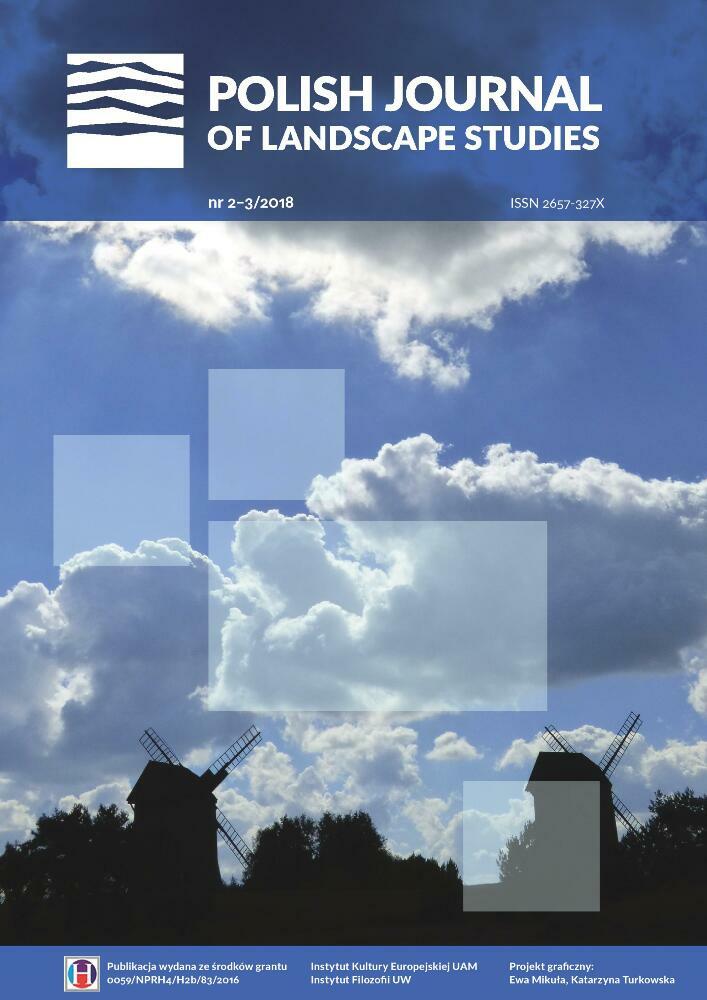Abstrakt
This paper describes and assesses Richard Haag’s controversial campaign to create Seattle’s Gas Works Park. Haag’s plan is significant in the history of environmental aesthetics, because it was the first to preserve remnants of industrial heritage in a United States city park, and because Haag appealed to aesthetics when making his case. I argue Haag’s campaign was persuasive, and I claim the former gas works now function within the park in much the same way as the ruins of parks of previous centuries. And because the structures are now ruins, they do not sanctify the destructive function they used to have. Finally, I claim that human intervention in abandoned, derelict, or post-industrial sites can be worthwhile if it successfully conveys a change in use or function of those sites, thus bringing beauty out of blight.Bibliografia
Allen, Neil L. 1972. The Seattle Times, February 27.
Anderson, Gerald R. 1971. The Seattle Times, July 19.
Campbell, Craig. July 1973. “Seattle’s Gas Plant Park.” Landscape Architecture: 338—42.
Carter, Glen. 1971. “Surfside Six: just junk.” The Seattle Times, January 8.
Chan, Elisabeth Clemence. 2009. “What roles for ruins? Meaning and narrative of industrial ruins in contemporary parks.” Journal of Landscape Architecture 4: 20—31.
Collins, Alf. 1971. “Consultant finds little can grow in most of gas-plant park site.” The Seattle Times, July 18.
Collins, Alf. 1972. “Edwards Park plan wins support.” The Seattle Times, March 2.
Dorpat, Paul. 2006. “Stonehenge in Seattle.” The Seattle Times, November 26. http://community.seattletimes.nwsource.com/archive/?date=20061126&slug=pacificpdorp26.
Easton, Valerie. 2015. “Meet Richard Haag: The landscape architect has designed many of our area’s best-known spaces.” The Seattle Times Pacific N W M agazine, June 19. http://www.seattletimes.com/pacific-nw-magazine/meet-richard-haag-the-landscape-architect-has-designed-many-ofour-areas-best-known-spaces/.
Edwards, Lindalee. 1972. “‘Eyesores’ don’t belong in Myrtle Edwards Park.” The Seattle Times, March 1.
Giedion, Sigfried. 2009. Space, Time and Architecture: The Growth of a New Tradition. Cambridge: Harvard University Press.
Green, Jared. 2015. “Seattle Layers Nature and Infrastructure (Part 1).” The Dirt: Uniting the Built and Natural Environments (American Society of Landscape Architects), May 7. https://dirt.asla.org/2015/05/07/seattle-layers-nature-and-infrastructure-part-1-2/.
Gropius, Walter. 1980. “The Development of Modern Industrial Architecture.” In Form and Function: A Source Book for the History of Architecture and Design 1890—1939, edited by Tim Benton, Charlotte Benton, and Dennis Sharp, 53—55. Granada: Open University Press.
Harrison, Lynne. 1972. The Seattle Times, January 4.
Hester, Randy. 1983. “Labors of Love in the Public Landscape.” Places 1: 18—27.
Kelley, Peter. 2012. “New exhibit celebrates parks, public spaces reclaimed from unusual uses—with slide show.” UW Today, May 11. http://www.washington.edu/news/2012/05/11/new-exhibit-celebrates-parks-public-spaces-reclaimed-from-unusual-uses-with-slide-show/.
Lane, Polly. 1971. “Gas-plant towers get reprieve in plan.” The Seattle Times, December 12.
Le Corbusier. 2007. Toward an Architecture. Translated by John Goodman. Los Angeles: Getty Research Institute.
Lubow, Arthur. 2004. “The Anti-Olmsted.” The New York Times, May 16. http://www.nytimes.com/2004/05/16/magazine/the-anti-olmsted.html?_r=0.
Maskit, Jonathan. 2007. “’Line of Wreckage’: Towards a Post-Industrial Environmental Aesthetics.” Ethics, Place, & Environment 10: 323—37.
Nissen Keith. 1971. The Seattle Times, August 1.
Raymond, Vaun. 2008. “Interview with Richard Haag (interviewed at Gas Works Park, October 9, 2008).”Lake Union Virtual Museum. http://www.lakeunionhistory.org/Oral_History_Gasworks_Park.html.
Reed, Peter. 2005. Groundswell: Constructing the Contemporary Landscape. New York: The Museum of Modern Art.
Richard Haag Associates. 2016. “Gas Works Park Partial Bibliography.” http://richhaagassoc.com/studio/wp-content/uploads/2013/05/GWP_HistoryBibliographyAwards.pdf.
Richard, Michael. 1983. Seattle’s Gas Works Park: The History, the Designer, the Plant, the Park, Map & Tour. Seattle: Tilikum Place Printers.
Robinson, Herb. n.d. “A reminder of ‘environmental abuse’? Gas-plant relics involve economics, too.” The Seattle Times.
Seattle Times. 1971. Editorial. The Seattle Times, December 27.
Thorne, Ned M. 1972. The Seattle Times, January 21.
Varney, Val. 1971. “Decision near an old gas plant.” The Seattle Times, December 17.
Varney, Val. 1972. “Edwards Park towers to remain.” The Seattle Times, January 7.
Voorhees, John. 1971. “A park is a park is a park.” The Seattle Times, July 25.
W.H.H. 1971. Letter to the editor. The Seattle Times, July 23.
“Interview with Thaïsa Way on 10 Parks That Changed America.” n.d. American Society of Landscape Architects. https://www.asla.org/ContentDetail.aspx?id=48144.
Way, Thaïsa. 2013. “Landscapes of industrial excess: A thick sections approach to Gas Works Park.” Journal of Landscape Architecture 8: 28—39.
Way, Thaïsa. 2015. The Landscape Architecture of Richard Haag: From Modern Space to Urban Ecological Design. Seattle: University of Washington Press.
Welch, Ruth. 1972. Letter to the editor. The Seattle Times, January 16.
